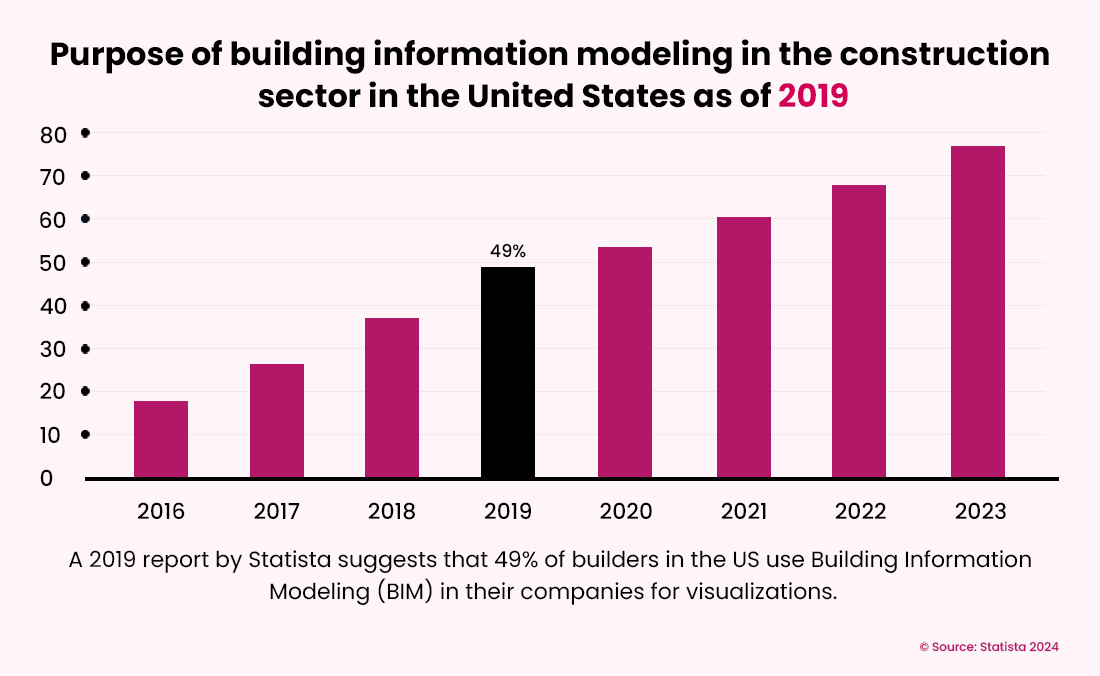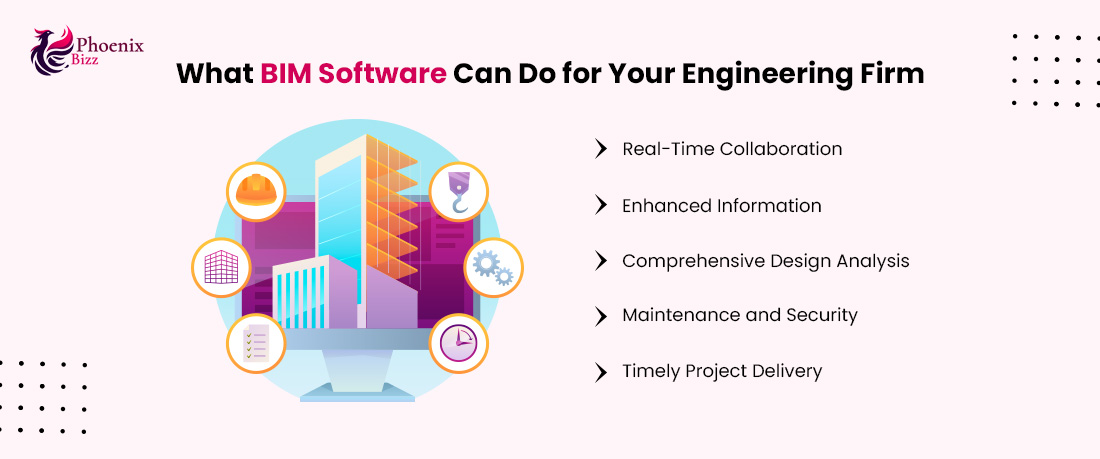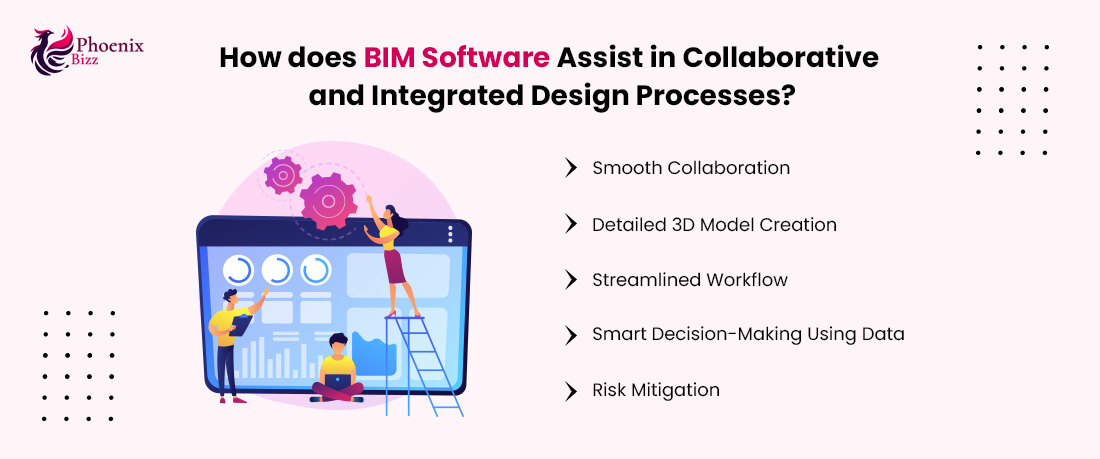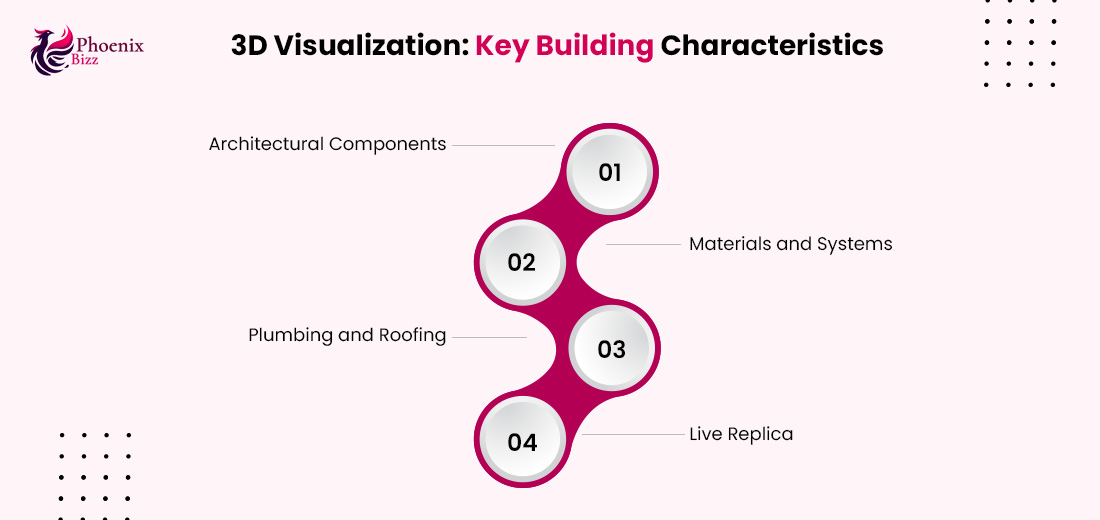July 08, 2024
By: PhoenixBizz Staff Writer
PhoenixBizz is a division of Sofvue, LLC
Printed with permission of Data Titan and Sofvue LLC
Creating building models is not limited to only considering rooms and ventilation, it involves accounting for all aspects of a residential or commercial space. Engineering firms require the help of technology in efficiently creating designs for durable and safe buildings. The entire design process can take time and it needs lots of back and forth. You also need all the stakeholders in the loop to ensure the design meets all requirements and complies with regulations.

A 2019 report by Statista suggests that 49% of builders in the US use Building Information Modeling (BIM) in their companies for visualizations. The impact of technology today is undeniable, and a single software solution can revolutionize your operations. The design departments of engineering firms are no exception—they are actively using BIM software to accelerate the design process by maintaining constant communication and collaboration.
We researched various reliable sources to create this insightful blog on how engineering firms can leverage BIM software for collaborative and integrated design processes.
Detailed Information on BIM Software
The primary purpose of BIM software is to alleviate the challenges faced by engineering firms by automating numerous processes. BIM acts as a centralized platform that integrates various project aspects such as imaging, screening, modeling, accounting, and execution. Imagine the time saved by consolidating different sketches and charts into one system that arranges them into a detailed 3D model.
What BIM Software Can Do for Your Engineering Firm

➔ Real-Time Collaboration: Facilitates seamless communication among architects, designers, builders, and all stakeholders, ensuring everyone is on the same page.
➔ Enhanced Information: Provides insightful data on budgets, cost estimations, project timelines, design limitations, risks, and more, leading to informed decision-making.
➔ Comprehensive Design Analysis: Offers in-depth design analysis for better clarity, improving overall decision-making.
➔ Maintenance and Security: Assists in maintenance tasks and ensures security even after project completion.
➔ Timely Project Delivery: Automates many tasks, leading to an efficient workflow and timely project delivery.
By leveraging BIM software, your engineering firm can achieve greater efficiency, accuracy, and collaboration, ultimately leading to more successful project outcomes.
How does BIM Software Assist in Collaborative and Integrated Design Processes?
BIM (Building Information Modeling) has emerged as a transformative technology in the fields of construction, architecture, and civil engineering. It facilitates collaborative and integrated design processes, making projects faster and more quality driven. Here are several ways in which BIM software assists in an efficient design process:

#1. Smooth Collaboration
BIM software enables team members to share and exchange information in real time through advanced communication tools. Cloud-based platforms and integrated project management features allow stakeholders to work simultaneously on the same model, irrespective of their geographic location. This real-time interaction reduces the time required for the design process and ensures that changes, upgrades, and modifications are visible to everyone immediately. Potential conflicts in the design process can be identified and resolved early in the concept design stage.
#2. Detailed 3D Model Creation
BIM software excels in delivering enhanced visualization by creating highly detailed 3D models of buildings and infrastructure. These models provide a comprehensive view of the project from various angles, aiding in visualizing distances and spatial interfaces between different parts. BIM tools can predict the performance of designs and systems under various scenarios, helping prevent problems and design flaws before construction begins.
#3. Streamlined Workflow
BIM software integrates seamlessly with other design and construction tools, creating a cohesive workflow that enhances efficiency. For instance, it can be integrated with Computer-Aided Design (CAD), Geographic Information Systems (GIS), and various project management software. This seamless data exchange improves processes across design, construction, and facility management, saving time and reducing redundant work. By streamlining workflows, BIM software minimizes risks and ensures smoother project execution.
#4. Smart Decision-Making Using Data
Effective data management is crucial in engineering and architecture. BIM software enables extensive data analysis to inform decision-making within teams. Whether assessing the environmental impact of a design, calculating material volumes, or estimating costs, BIM provides the necessary data for strategic decisions. This data-driven approach improves design quality and project management, ensuring projects are completed within cost and time constraints.
#5. Risk Mitigation
Compliance with standards and regulatory measures is essential for engineering firms. BIM software integrates these requirements into the design process, alerting users to non-compliance issues. It ensures designs adhere to building codes, safety standards, and other regulations, preventing time and resource waste due to post-construction corrections. By detecting risks early in the project, BIM promotes a proactive approach, reducing time wastage and potential crises during the construction phase.
More About 3D Visuals Generated Using BIM Software
A software integrated with BIM technology delivers high-quality 3D models of buildings, packed with essential information that enables engineers and contractors to make informed decisions and plan construction work effectively. These 3D visuals incorporate the following building characteristics:

1. Architectural Components
Includes all architectural elements such as doors, windows, walls, ventilators, and more.
2. Materials and Systems
Details raw materials, usage, electricity portals and connections, security cameras, and other critical systems.
3. Plumbing and Roofing
Adds plumbing and roofing systems to the 3D models, providing a clear understanding of their functionality.
4. Live Replica
Combines all these elements to create a live replica of the building, offering the team a comprehensive view of how it will appear in real life.
By incorporating these features, BIM software provides a detailed and realistic representation of the building, facilitating better planning, coordination, and execution of construction projects.
How to Select the Best BIM Software Development Company?
Are you on the lookout for world-class BIM software designed using competent and innovative technologies? Hiring a professional software development company is the ideal way to get custom software developed to your specifications. These companies have trained staff who handle your project with responsibility and precision. Here are crucial factors to consider before hiring a software development partner:
Step 1. Prior Work Experience:
➤ Portfolio Review: Software development companies are always eager to take on new projects, but you should hire one that best suits your requirements and has experience with similar projects. Request their portfolio or look for details of previous projects on their website.
➤ Proof of Work: Ask the developer to provide you with at least a few dozen letters of recommendation, and at a minimum, call three companies who the developer has completed projects, and ask them about the experience they had working with the developer, what worked, what didn’t, and whether they would hire the developer again for other projects.
Step 2. Technology Trend Awareness:
➤ Stay Updated: Building Information Modeling is a tech-driven process that constantly evolves. Choose a partner who is deeply aware of ongoing trends to ensure your software remains relevant and competitive in the ever-changing tech landscape.
By considering these factors, you can select a competent software development partner to deliver innovative and high-quality BIM software tailored to your needs.
You may also like to read: How To Develop A Real Estate Mobile App For Your Real Estate Brokerage Firm
Conclusion
Building Information Modeling is the future of engineering companies! A report by Markets and Markets suggests that BIM market size was valued at $7.9 billion in 2023 and is expected to reach $15 billion by 2028. This signifies that more firms are investing in this technology.
Do you need help with developing high-end BIM software? PhoenixBizz can be your ultimate partner in this journey. A division of Sofvue LLC, we exist to make your business processes flow effortlessly with our software development solutions. Whether you want optimized and feature-rich BIM software or if you have existing software needing to be upgraded, we can help.
Our dedicated team includes architects, engineers, programmers, designers, analysts, and project managers who carefully study your project prerequisites before accepting any project. PhoenixBizz is part of DataTitan.com, and Sofvue, LLC, a trusted Phoenix software development company serving a wide swath of industries. Feel free to call our support team at 623-845-2747 to discuss any upcoming project(s) you may be considering.
RE: 11814
Citations
Statista: https://www.statista.com/statistics/1020765/uses-bim-construction-sector-us/
Markets and Markets: https://www.marketsandmarkets.com/Market-Reports/building-information-modeling-market-95037387.html









